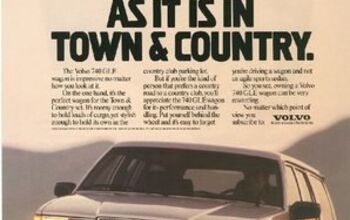Hammer Time: Does Acceleration Matter?
I drive about 200 hundred cars every year. Some go 0 to 60 in about 6 seconds flat… others take as long as 10 or 12 seconds. Even the slowest of these cars are amazingly fun to drive when you are in the right place and time. As for the fastest? Well they offer sport and convenience, and more opportunities to feel a Baruthian thrust.
But given how most people drive their cars these days… does it really matter?There was a time when acceleration truly sucked. The late-70’s to late-80’s was an era laden with double nickels, turbo lag, and enough environmental regulations to make Ralph Nader jump for joy.
Then things changed. A plebian Camry with a mere 91 horsepower back in the Reagan era, now offers 268. The 1995 Dodge Neon completely obliterated the horspower rankings back in its release with 150 horsepower (and a 0 to 60 time in the mid-7’s). That was about double versus the average a decade ago.
In today’s market everything well short of a the defunct Aveo can go pretty fast. Even diesels. Now that we’re at a point where most everything can go ‘pretty fast’, does acceleration have any major importance? I’m sure that tomorrow’s engineers of muscle cars and other performance vehicles will always have an eye on the spec sheet. But what about Hyundais, Camcords, and other mainstream vehicles that are mainly used for commuting?
Should new car reviewers emphasize the interiors and the multimedia features more than ‘acceleration’? Do 0 to 60 times really matter? What says you?
More by Steven Lang


































Comments
Join the conversation
Everyone likes fast acceleration but no-one "needs" it. Tractor trailers have 0-60 times considerably greater than 10 seconds yet their drivers routinely merge into heavy traffic with a 60-80 foot long (or greater with a tandem or triple) vehicle. He who "needs" fast acceleration to avoid an accident probably used poor judgment in getting into that situation to begin with.
Don't forget that not everyone lives in a congested metro region. And not everyone commutes. I work out of my home and go into the city (2 hour drive) once a month for meetings. I have the Pacific Ocean on one side of me but on the other side are miles and miles of excellent open back roads with zero traffic. I bought an AMG not for simply getting from point A to point B, but primarily for personal entertainment purposes.
Real-world performance, not spec sheets, is where it's at. In American driving conditions, what we need is buckets of torque right from idle, since we hate revving our engines, insist on automatics, and do tons of stop-and-go and variable-speed highway traffic. That calls for diesels or moderate-displacement V6s with variable valve timing. Smaller turbo motors are the Thing now, but they fall short. Turbo 4s rarely match EPA numbers in real-world driving -- witness the dismal observed fuel economy of the Acura and Mazda compact turbo crossovers. And in a full-throttle launch from a dead stop, a small-displacement turbo car with an automatic (hello 1.8 liter VW/Audi) is terrifyingly slow to get underway -- until the turbo spools up, you just have a tiny low-compression engine in a big heavy car. Give me a choice between a NA V6 and turbo 4 with the same horsepower rating, and I'll choose the 6, thank you, EPA highway MPG be damned. FWIW, the safest I've ever felt driving in L.A. was behind the wheel of an Infiniti G37, knowing its vast torrents of ever-ready power could immediately escort me out of the path of any oncoming danger. Maybe available power should be considered a safety feature.
Acceleration is king, to me. Having the extra power to blast out of harms way because of poor judgement (mine or someone else's) is a big deal. How the vehicle makes it is important too. The above post mentioned the 1.8T VW attached to an automatic. A few times I caught the car flatfooted because it was off boost and in the wrong gear (i.e didn't totally stop as in a yield, but wouldn't kick down due to being too fast for lower gear) I have an Altima with the CVT and 2.5. Pulling out quickly from a dead stop can be a problem because of how long it takes the CVT and slow revving 2.5 to get their act together.